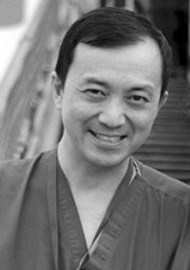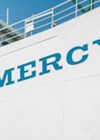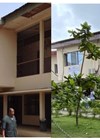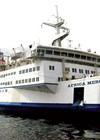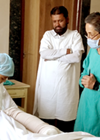History of Mercy Ships
Mercy Ships began with Don and Deyon Stephens’ dream and an inspirational meeting with Mother Teresa. In 1978, their desire to create hospital ships that could deliver safe, free surgery to those around the world without access took shape when they purchased and transformed a retired Italian cruise liner, Victoria, into Anastasis, a hospital ship.
Anastasis was joined by two smaller ships, Island Mercy and Caribbean Mercy in the mid-1990s. Both smaller ships retired in the early 2000s. The Dronning Ingrid, a Danish rail ferry, was purchased in 1999 and converted to the Africa Mercy® in a dockyard in Newcastle, UK. In 2007, Anastasis made her final sail to Liberia where she passed the flame to the Africa Mercy. In 2015, Mercy Ships started to construct the first purpose-built training hospital ship, the Global Mercy™. She made her maiden voyage to Africa to serve alongside the Africa Mercy in Dakar, Senegal in 2022, making Mercy Ships a two-ship fleet for the first time in over 15 years. For nearly 50 years, Mercy Ships has focused on providing safe and free elective world-class surgery and medical capacity building of the host nation onboard large and fully equipped, staffed hospital ships.
Global surgical crisis
The Lancet Commission (2015) reported that two-thirds of the world’s population do not have access to safe, affordable and timely surgery. That means 17 million lives (33% of all deaths worldwide) are lost from lack of access to surgery. This is higher than the worldwide deaths from HIV/AIDS, tuberculosis and malaria combined. The burden of untreated surgical conditions falls heaviest on individuals living in low-income countries and this affects over 90% of sub-Saharan Africa. The postoperative mortality rate is two times higher in Africa when compared with that of high-income countries like the UK. Moreover, 80 million people worldwide are driven to financial catastrophe due to the cost of surgery and access to surgical care.
Many benign conditions which could be treated by minor surgery under local anaesthesia when they were small can become life-threatening or grossly disfiguring deformities or extensive tumours. Mercy Ships’ programme of reducing the burden of unmet surgical needs in our host nations is by improving the quality of life for patients living with disease, disfigurement and disability in eight different surgical specialties, namely craniomaxillofacial, head and neck; burns and plastic reconstruction; paediatric orthopaedic; ophthalmic; women’s health (including obstetric fistula); general; paediatric general and dental surgery. Our anaesthesia teams provide world-class care with modern airway equipment and ultrasound-guided regional anaesthesia for both children and adults. Surgeries and all associated care are free, which includes any rehabilitation needed, food, lodging, and transportation for both patients and their care-givers.
The more you share, the more you have
Seeing patients with extensive tumours and deformities saddens me because they can be rejected by their families and ostracised by their communities. These patients are humans, just like you and I, with hopes and dreams but their opportunities became so limited. Our Mercy Ships’ volunteer surgical teams can change their lives by removing the tumours and disfigurements.
Among these desperate and isolated patients, healing starts when they are greeted through screening or on our ships with a simple handshake – it begins with that basic human contact and acceptance, because some patients have not had human contact or seen a doctor for more than 20 years. Patients feel trapped behind their facial tumours or other deformities, but they are still in there. They need to know that they have value and they are no less important than someone else just because they have a tumour and cannot afford or access surgery.
When the tumour or deformity is removed, patients often display disbelief when they look at the mirror – they keep checking for many days, to make sure that they are not dreaming and that the tumour has actually gone. This indescribable and heavenly satisfaction among the whole surgical and anaesthetic teams is invaluable. No amount of money can buy that divine satisfaction. When we use our life energy in the pursuit of recognition, wealth and pleasure, we can be seen as successful. However, when we define our personal success as adding value to the lives of others, we are on the path of significance. Working in a high-income country like the UK and serving onboard the Mercy Ships to bring hope and healing to the forgotten poor in Africa, one can bring these two paths together. It is a true miracle. “The more we share, the more we have,” as Winston Churchill observed. “We make a living by what we get, but we make a life by what we give.”
Relief and development
The dichotomy of “Give a man a fish, you feed him for a day; teach a man to fish, you feed him for a lifetime” is false. It is easier for students to learn when they are not hungry. Similar tension exists between relief and development in the global surgical crisis because it takes a long time to build space, staff, stuff and system (4 Ss) as described by the late Paul Farmer for the development of a sustainable surgical service. Apart from using modern hospital ships to provide life-saving and life-transforming surgery to desperate patients with advanced surgical deformities, Mercy Ships’ Education, Training and Advocacy (ETA) teams provide mentorship, training and support for a sustainable surgical service from grassroot to government levels. These long-term partnerships we build with the host nations are designed to last long after the ships leave.
In partnership with other surgical training organisations, Mercy Ships offers specialised residency and fellowship rotations in areas of maxillofacial / head and neck surgery, reconstructive plastic surgery, anaesthesia, data informatics and perioperative nursing. Our ships’ hospitals have been part of the rotation in our partner country’s established training programmes for surgery, anaesthesia and nursing.
In our previous healthcare services in Guinea, up to 7000 patients attended our triage week, queueing in a football stadium or multi-storey government building. Hundreds of patients with facial cleft deformities were selected for surgical reconstruction. In our 2018 field trip back to Guinea, there were only six cleft lip and palate patients out of more than 6000 screened patients. This was due to two Guinean maxillofacial and reconstructive surgeons who took part in our Medical Capacity Building (now ETA) programme and were mentored in cleft surgery onboard during our previous visits. They care for hundreds of cleft patients with material assistance from Smile Train. Similar improvements and impact are seen in cataract surgery in Togo and reconstructive plastic surgery for burns in Benin.

Figure 1a: 73-year-old great grandmother with over 3kg goitre (nearly a tenth of her body weight) (before).

Figure 1b: Goitre; total thyroidectomy using harmonic scalpel (after).

Figure 2a: 38-year-old lady with over 10 years of enlarging bilateral mandibular ameloblastoma (before).

Figure 2b: Bilateral mandibular benign ameloblastoma; subtotal mandibulectomy, reconstruction plate and iliac corticocancellous bone graft (after).

Figure 3a: 19-year-old male with enlarging cervicofacial plexiform neurofibroma (before).

Figure 3b: Right cervicofacial plexiform neurofibroma; complete excision with harmonic scalp (synergy) and reconstruction with local flaps and skin graft (after).

Figure 4a: 27-year-old female had 2kg mandibular ameloblastoma (before).

Figure 4b: Mandibular ameloblastoma; resection and reconstruction with heavy recon plate and iliac corticocancellous bone graft (after).

Figure 5a: 18-year-old female with left mandibular ameloblastoma (before).

Figure 5b: Mandibular tumour; subtotal mandibulectomy, reconstruction plate and iliac crest bone graft – she is now married and living a full life (after).

Figure 6a: 41-year-old man with seven-year history of pleomorphic adenoma of parotid gland, weight 1.5kg (before).

Figure 6b: Parotid mass postoperative (after).

Figure 7a: 31-year-old female with recurrent extensive plexiform neurofibroma (before).

Figure 7b: Radical resection with harmonic scalpel and reconstruction with radial forearm free flap and skin graft (after).
Opportunities were developed to mentor the entire surgical ecosystem from anaesthesia providers and nursing staff to biomedical and sterile processing technicians. Our simulation courses onboard have led to simulation courses to the whole medical faculties in Thies, Senegal. The implementation of the World Health Organization (WHO) Surgical Safely Checklist in Madagascar, Benin and Cameroon have saved countless lives. In Guinea, Mercy Ships’ Country Director (formerly Chief Dental Officer) has been instrumental in building a new dental hospital to empower the next generation of dental students. Similar long-term partnerships and investments have been developed in Universite Gamal Abdel Nasser de Conakry in Guinea and Connaught Hospital in Freetown, Sierra Leone.
Training courses including multidisciplinary WHO checklist training programmes, and mentoring programmes for surgeons, anaesthetists, nurses and sterile processing have promoted personal and organisational changes towards improved patient safety by reducing mortality, surgical site infections and complications after surgery.
Advocacy is an important part of our programmatic pillar of ETA – we believe that all patients should have access to quality, affordable, medical / surgical treatment and whole-person care so that they can reach their God-given potential. Some of our direct advocacy activities include submitting findings to peer-reviewed scientific publications about Mercy Ships work and having a presence at international meetings such as the G4 Alliance, the United Nations General Assembly, and the World Health Assembly. We continue to support regional policy efforts to increase access to surgical care.
When lives are transformed by our Country Engagement Plan, we see transformation of systems and communities which will ultimately transform the nation. Looking to the future, we hope that these nations will not require Mercy Ships’ assistance and we effectively do ourselves out of a job!
A surgical fleet – Africa Mercy and Global Mercy
Mercy Ships is an international faith-based organisation focusing on partnering with African nations for the last three decades. Each year, more than 2500 volunteer professionals from over 60 countries serve onboard the hospital ships, dedicating their time and skills to provide access to safe surgical and anaesthetic care.
The Africa Mercy houses five operating theatres, 80 acute care beds and five ICU / isolation beds. The hospital onboard is equipped with wards, a pharmacy, laboratory, blood bank, and radiology equipment, including a CT scanner. Each year, more than 1100 volunteer professionals serve onboard. Perioperative service extends to the dock through the use of tents and specially designed containers for outpatient care and rehabilitation after discharge. For nearly 20 years, the Africa Mercy has conducted 16 field service assignments in West Africa and Madagascar. It has delivered services valued at over US$902 million, provided over 70,910 life-changing surgical procedures, trained over 8340 medical professionals in their area of expertise, and there have been over 766,930 direct beneficiaries.
The Global Mercy is the world’s largest state-of-the-art purpose-built civilian training hospital ship, which more than doubles Mercy Ships’ capacity to provide free surgery and training. The Global Mercy can house over 600 volunteer crew members with all the essential facilities of a floating village like those on board the Africa Mercy. Its hospital has 102 acute care beds, 90 self-care beds, six operating theatres, and seven ICU / isolation beds. Moreover, the Global Mercy was also built as a platform for training and mentoring by having training spaces and a simulation laboratory to help trainers to simulate local conditions and limitations to teach the best practices in low-resource environments. In the two healthcare services since its launch, the Global Mercy has delivered services valued at over US$62 million, performed over 4490 life-changing surgical procedures, trained more than 1070 professionals in their area of expertise enabling over 5680 direct beneficiaries.
Apart from performing life-saving and life-transforming surgery onboard our Mercy Ships, we are also training the next generation of African healthcare workers so that they can save countless lives by training others. This in-depth training of local medical professionals during the time we are in port allows us to ensure our legacy of hope and healing continues long after our ships depart. Serving with many long-term volunteer surgeons and other crew members has been an indescribable and utterly inspiring experience that has empowered me to serve on our ships year after year. The unique and united purpose of all volunteer crew members is to bring hope and healing to each patient we encounter, which makes life worth living as we serve others wholeheartedly, without counting the cost.
Living in high-income countries like the UK, we have so much to give with our enormous resources and skills that we can offer the poor of our world today. For hope to be believable and credible in the future, it needs to be tangible and felt in the present. That is what Mercy Ships can do by offering free world-class life-saving surgery and training. We invite you to partner with us in bringing hope and healing to the forgotten poor in West Africa.
Declaration of competing interests: Leo Cheng is a Trustee of Mercy Ships UK (non-renumerated).


